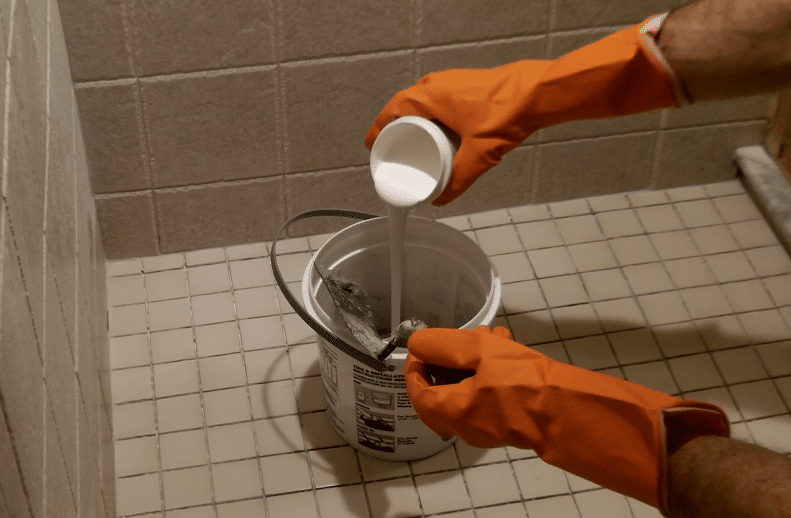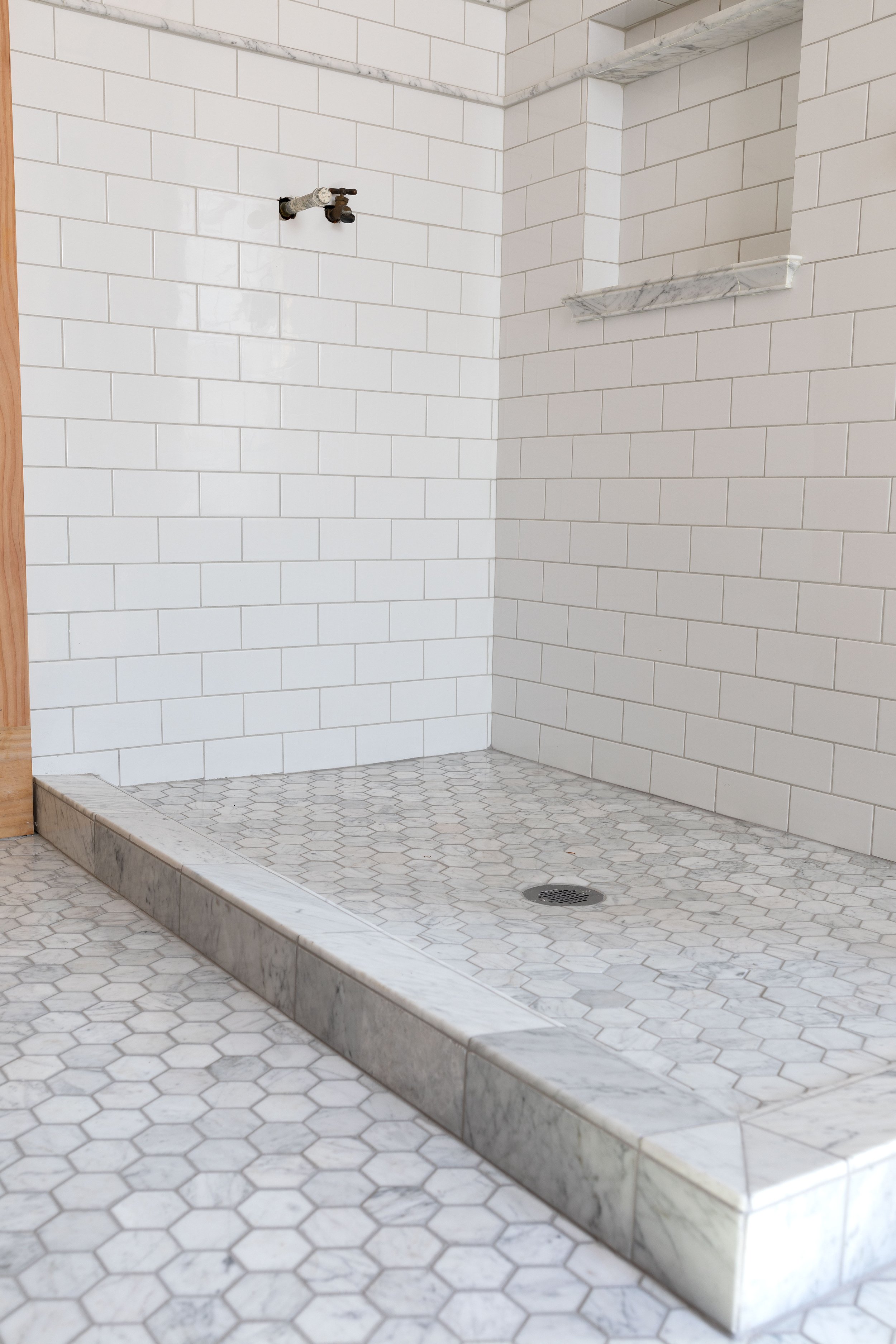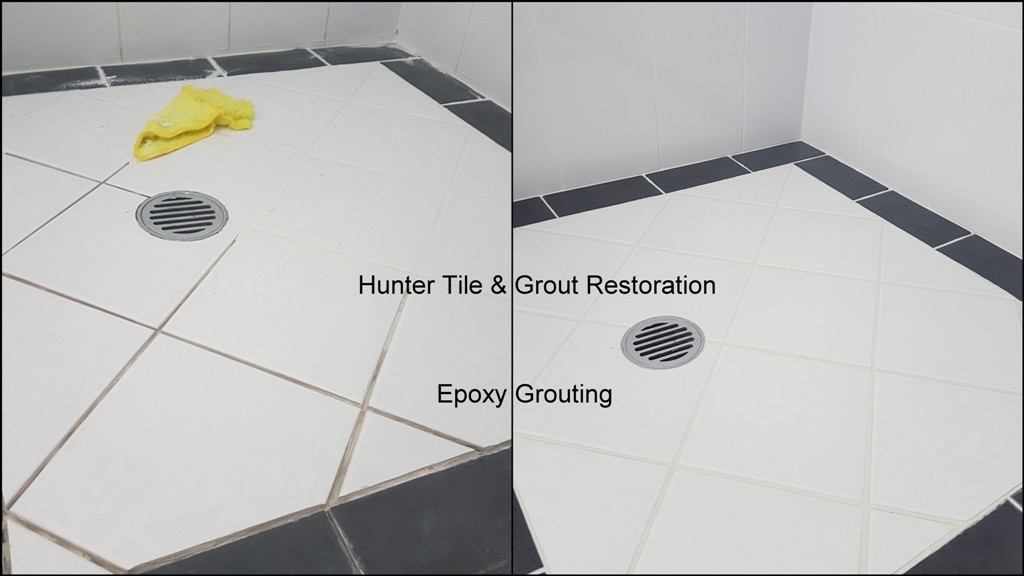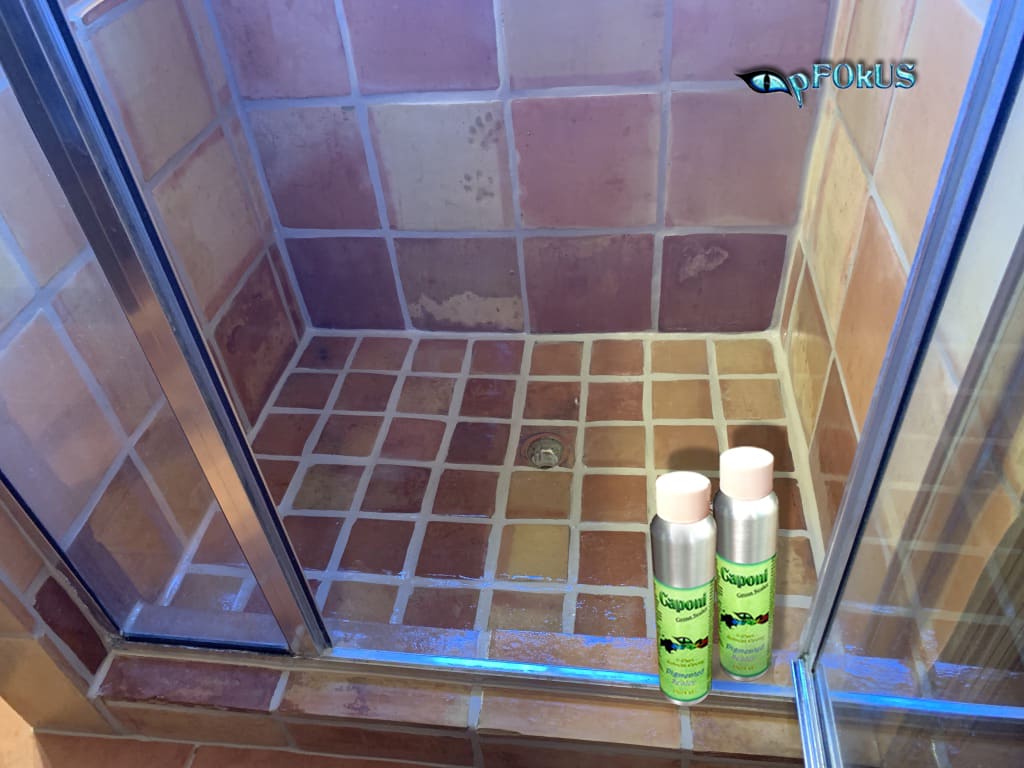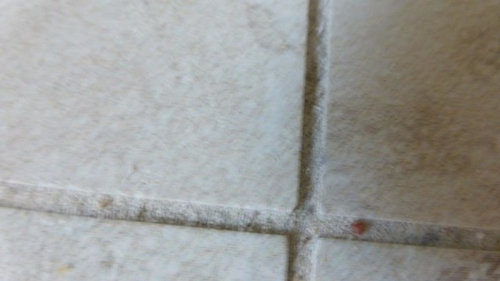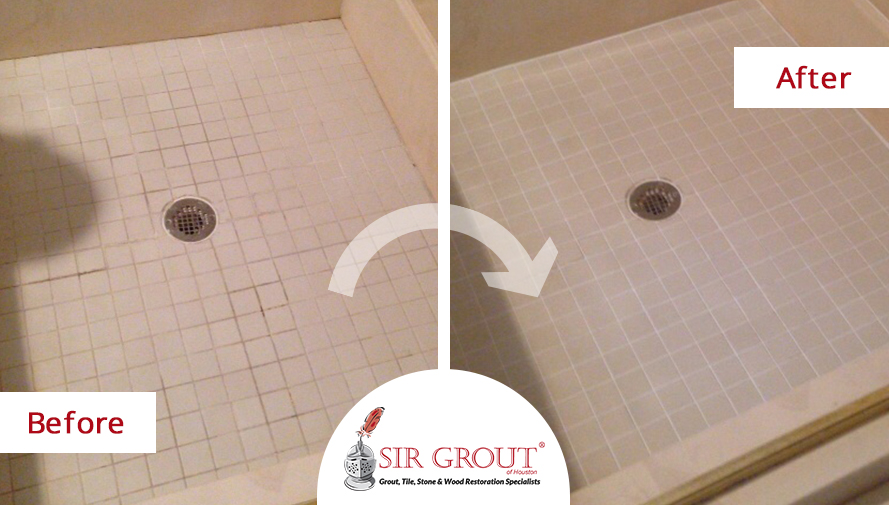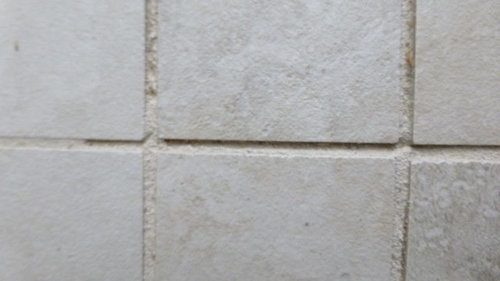The Benefits of Epoxy Grout for Shower Floors
When it comes to choosing grout for your shower floor, epoxy grout is a popular and highly recommended option. We will talk about the numerous benefits of using epoxy grout and why it is an excellent choice for your shower floors. From its durability and water resistance to its stain and mold resistance, epoxy grout offers several advantages that make it stand out among traditional grout options.
- Enhanced Durability: Epoxy grout is known for its exceptional durability, making it an ideal choice for high-traffic areas like shower floors. Unlike traditional grout, which can crack or deteriorate over time, epoxy grout is resistant to cracking, chipping, and shrinking. Its robust composition ensures that it can withstand daily wear and tear, ensuring a long-lasting and visually appealing shower floor.
- Superior Water Resistance: One of the key advantages of epoxy grout is its superior water resistance. Regular grout can absorb water, leading to mold and mildew growth over time. Epoxy grout, on the other hand, is non-porous and does not absorb moisture. This makes it highly resistant to mold, mildew, and stains, ensuring a cleaner and healthier shower environment.
- Stain Resistance: Epoxy grout is highly resistant to stains, making it an excellent choice for shower floors. Unlike regular grout, which can easily become discolored and stained by soap scum, shampoo, or other products, epoxy grout maintains its pristine appearance. This stain resistance not only saves you time and effort in cleaning but also keeps your shower floor looking fresh and vibrant for years to come.
- Easy Maintenance: Maintaining epoxy grout is relatively easy compared to traditional grout. Its non-porous nature prevents dirt and grime from penetrating the surface, making it effortless to clean. A simple wipe-down with a mild detergent and water solution is usually sufficient to keep it looking spotless. Additionally, since epoxy grout is resistant to mold and mildew, you can spend less time scrubbing and more time enjoying your shower.
- Versatile Application: Epoxy grout is suitable for a variety of shower floor materials, including ceramic, porcelain, and stone tiles. Due to its high adhesive properties, it provides excellent bond strength, ensuring that the tiles stay in place for years to come. This versatility allows homeowners to choose their preferred shower floor material without worrying about compatibility issues.

How to Properly Prepare and Apply Epoxy Grout for Shower Floors
To ensure the best results and maximize the benefits of epoxy grout for your shower floors, it is crucial to properly prepare and apply the grout. We will guide you through the step-by-step process of preparing and applying epoxy grout, ensuring a seamless and long-lasting finish.
Surface Preparation: Before applying epoxy grout, it is essential to properly prepare the surface of your shower floor. Start by removing any existing grout or adhesive residue using a grout removal tool or a suitable solvent. Ensure that the surface is clean, dry, and free from any debris or contaminants. Repair any cracks or uneven areas and allow them to dry completely before proceeding.
Mixing the Epoxy Grout: Follow the manufacturer’s instructions for mixing the epoxy grout. Typically, epoxy grout comes in two parts: a resin and a hardener. Mix the two components thoroughly in a clean bucket using a mixing paddle or a mechanical mixer. Ensure that the mixture is homogeneous and free from any lumps.
Application: Using a grout float or a rubber grout float, apply the mixed epoxy grout onto the shower floor, working it into the joints between the tiles. Hold the float at a 45-degree angle and apply firm pressure to ensure proper coverage. Work in small sections at a time to prevent the grout from drying out.
Cleaning Excess Grout: After applying the epoxy grout, allow it to be set for the recommended time specified by the manufacturer. Once it reaches the desired consistency, use a damp sponge or a grout haze remover to clean off any excess grout from the surface of the tiles. Rinse the sponge frequently to avoid smearing the grout.
Finishing Touches: After cleaning off the excess grout, use a grout finishing tool or a rounded stick to shape and smooth the grout lines. This step helps create a clean and professional-looking finish. Allow the grout to cure fully before exposing it to water or heavy use, following the manufacturer’s instructions.
Sealing the Grout: Although epoxy grout is inherently stain-resistant, it is recommended to seal it for additional protection. After the grout has fully cured, apply a high-quality epoxy grout sealer according to the manufacturer’s instructions. This step ensures long-term durability and helps maintain the grout’s appearance over time.
Epoxy Grout vs. Traditional Grout: Which is Best for Your Shower Floor?
Choosing between epoxy grout and traditional grout for your shower floor can be a decision that impacts both the aesthetics and functionality of your space. Let’s compare epoxy grout and traditional grout, highlighting their key differences and helping you determine which option is best suited for your shower floor.
Composition and Properties: Epoxy grout and traditional grout differ in their composition and properties. Traditional grout is typically a mixture of cement, sand, and water. It is porous and prone to staining, mold, and mildew growth. Epoxy grout, on the other hand, is made of epoxy resins and a hardener. It is non-porous, highly resistant to stains, and provides excellent water and mold resistance.
Durability and Longevity: When it comes to durability and longevity, epoxy grout outperforms traditional grout. Traditional grout can crack, shrink, or deteriorate over time due to its porous nature and exposure to moisture. Epoxy grout, on the other hand, is highly resistant to cracking, chipping, and shrinking, ensuring a longer lifespan for your shower floor.
Water and Stain Resistance: Water and stain resistance is a crucial factor to consider for shower floors. Traditional grout is porous and absorbs water, making it susceptible to mold, mildew, and staining. Epoxy grout, being non-porous, repels water and prevents the growth of mold and mildew. It also resists stains, making it easier to maintain and keeping your shower floor looking clean and fresh.
Cleaning and Maintenance: Maintenance is another aspect where epoxy grout shines. Traditional grout requires regular cleaning and sealing to prevent staining and keep it looking its best. Epoxy grout, however, is relatively low maintenance. Its non-porous surface makes it easy to clean with mild detergent and water. Additionally, it does not require regular sealing, saving you time and effort in the long run.
Aesthetics and Color Options: Traditional grout offers a wide range of color options, allowing you to match or contrast it with your tiles. However, over time, traditional grout can become discolored and lose its original appearance. Epoxy grout provides consistent color and does not fade or discolor, giving your shower floor a uniform and visually appealing look.
Maintaining and Cleaning Epoxy Grout for Long-lasting Shower Floors
To ensure that your epoxy grout shower floor remains in pristine condition and lasts for years to come, proper maintenance and regular cleaning are essential. We will provide you with valuable tips and techniques for maintaining and cleaning epoxy grout, helping you keep your shower floor looking beautiful and hygienic.
Regular Cleaning Routine: Establishing a regular cleaning routine is crucial for maintaining epoxy grout. Start by sweeping or vacuuming the shower floor to remove any loose dirt or debris. Then, using a mild detergent or a pH-neutral cleaner, mix it with warm water in a bucket. Dip a soft brush or a non-abrasive sponge into the solution and scrub the grout lines gently. Avoid using harsh or abrasive cleaners that can damage the epoxy grout. Rinse the floor thoroughly with clean water to remove any residue.
Addressing Stains and Discoloration: If you notice stains or discoloration on your epoxy grout, it’s important to address them promptly. For mild stains, create a paste using baking soda and water, and apply it to the stained area. Let it sit for a few minutes, then scrub gently with a soft brush. Rinse with clean water. For more stubborn stains, you may need to use a specialized epoxy grout cleaner or a mild bleach solution. Always follow the manufacturer’s instructions and perform a patch test in an inconspicuous area before using any cleaning product.
Preventing Mold and Mildew Growth: To prevent mold and mildew growth on your epoxy grout, it’s important to maintain proper ventilation in your bathroom. Use a squeegee or towel to remove excess moisture from the shower floor after each use. Additionally, periodically inspect the grout lines for any signs of mold or mildew. If you notice any growth, use a mixture of equal parts vinegar and water or hydrogen peroxide to kill the mold and mildew. Allow the solution to sit for a few minutes, then scrub gently and rinse thoroughly.
Avoiding Harsh Chemicals and Tools: When cleaning epoxy grout, it’s important to avoid using harsh chemicals or abrasive tools that can damage the grout or its sealant. Acidic or alkaline cleaners, bleach, ammonia, and abrasive scrub brushes should be avoided. Stick to mild detergents, pH-neutral cleaners, and non-abrasive brushes or sponges to ensure the longevity of your epoxy grout.
Regular Sealing: While epoxy grout is naturally stain-resistant, it is recommended to apply a sealer to enhance its protection and longevity. Follow the manufacturer’s instructions for the specific epoxy grout sealer you choose. Regularly reapply the sealer as recommended to maintain its effectiveness.
Top Tips for Choosing the Right Epoxy Grout Color for Your Shower Floor
Selecting the right epoxy grout color for your shower floor can greatly impact the overall aesthetic and design of your bathroom. We will provide you with top tips to consider when choosing the perfect epoxy grout color, ensuring it complements your shower tiles and creates the desired ambiance in your space.
Consider the Tile Color and Style: When choosing an epoxy grout color, it’s important to consider the color and style of your shower tiles. Determine whether your tiles have a warm or cool undertone. For example, if you have earthy-toned tiles, such as beige or brown, consider a complementary grout color like a light tan or brown. If your tiles have cooler tones like blues or greens, a gray or white grout can provide a sleek and modern look. By considering the tile color and style, you can ensure a harmonious and visually pleasing combination.
Contrast or Blend In: Decide whether you want your epoxy grout to contrast or blend in with your shower tiles. Contrasting grout can create a bold and dramatic effect, highlighting the individual tiles and their patterns. For example, using a dark grout with light-colored tiles can create a striking contrast. On the other hand, if you prefer a more seamless and subtle look, choose an epoxy grout color that closely matches the color of your tiles. This will allow the focus to be on the tiles themselves rather than the grout lines.
Consider Maintenance and Stain Visibility: Keep in mind that lighter-colored epoxy grout may show stains and discoloration more easily compared to darker grout. If you anticipate heavy use or are concerned about stains, opt for a darker grout color that can better conceal any potential discoloration. However, it’s important to note that darker grout can fade over time due to exposure to sunlight and cleaning products. Consider the maintenance requirements and your personal preference when deciding on the grout color.
Test Samples: Before committing to a specific epoxy grout color, it’s advisable to test samples. Obtain small samples of different grout colors and apply them to a piece of cardboard or a spare tile. Place the samples next to your shower tiles to see how they look in different lighting conditions and with the surrounding elements. This will give you a better idea of how the grout color will appear in your specific bathroom environment.
Seek Professional Advice: If you’re unsure about which epoxy grout color to choose or want expert guidance, don’t hesitate to seek advice from a professional. Tile and grout specialists can provide valuable insights based on their experience and knowledge of design trends. They can help you select a grout color that complements your shower tiles and achieves the desired visual impact.
All About Epoxy Grout (Read This Before You Pick a Color!) u2014 The
Epoxy Grouting – Hunter Tile u0026 Grout Restoration
DIY Restore Your Bathroom with the Best Epoxy Grout Sealer
Shower floor: poor epoxy grout job?
Regrouting and Caulking Do Wonders to 10 Year Old Shower in Houston
4 Easy Ways to Clean Epoxy Grout
Epoxy vs. Cement Grout u2014 Whatu0027s the Difference?
Shower floor: poor epoxy grout job?
How to Grout Tile with Spectralock Epoxy (Quick Tips)
Related Posts:
- Behr 1 Part Epoxy Garage Floor Paint Review
- Epoxytech Floor Coating
- Epoxy Floor Coating On Plywood
- Epoxy Floor Tile Adhesive
- Epoxyshield Garage Floor Coating Instructions
- Quikrete Tan Epoxy Garage Floor Coating
- How Much Does It Cost To Get Garage Floor Epoxy
- Low Voc Epoxy Flooring
- Rhino Epoxy Floor Coating
- Epoxy Floor Paint On Plywood

